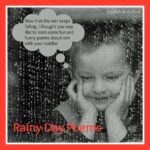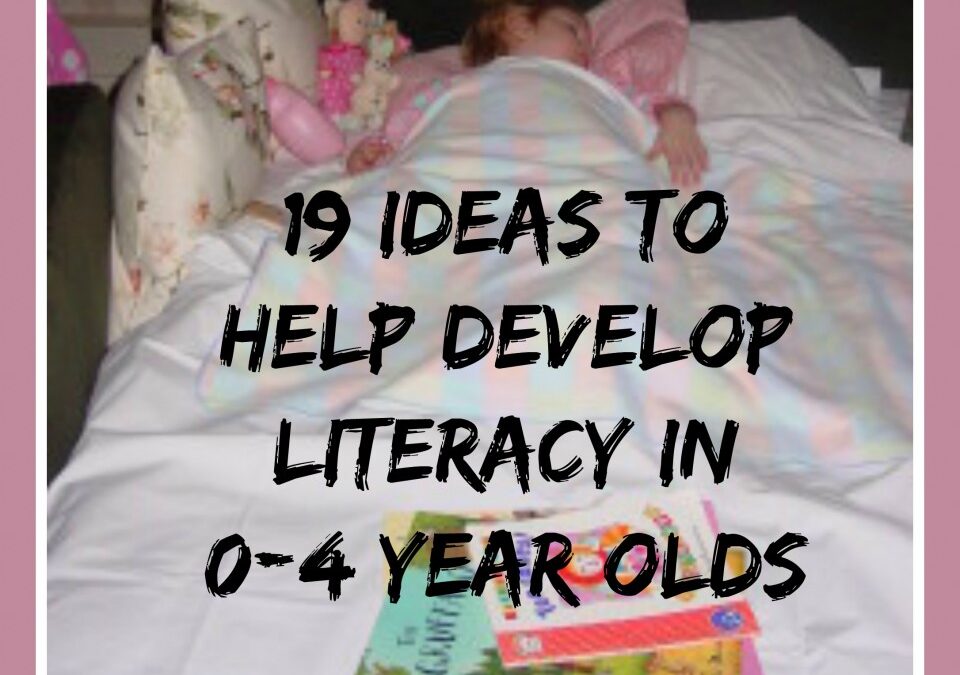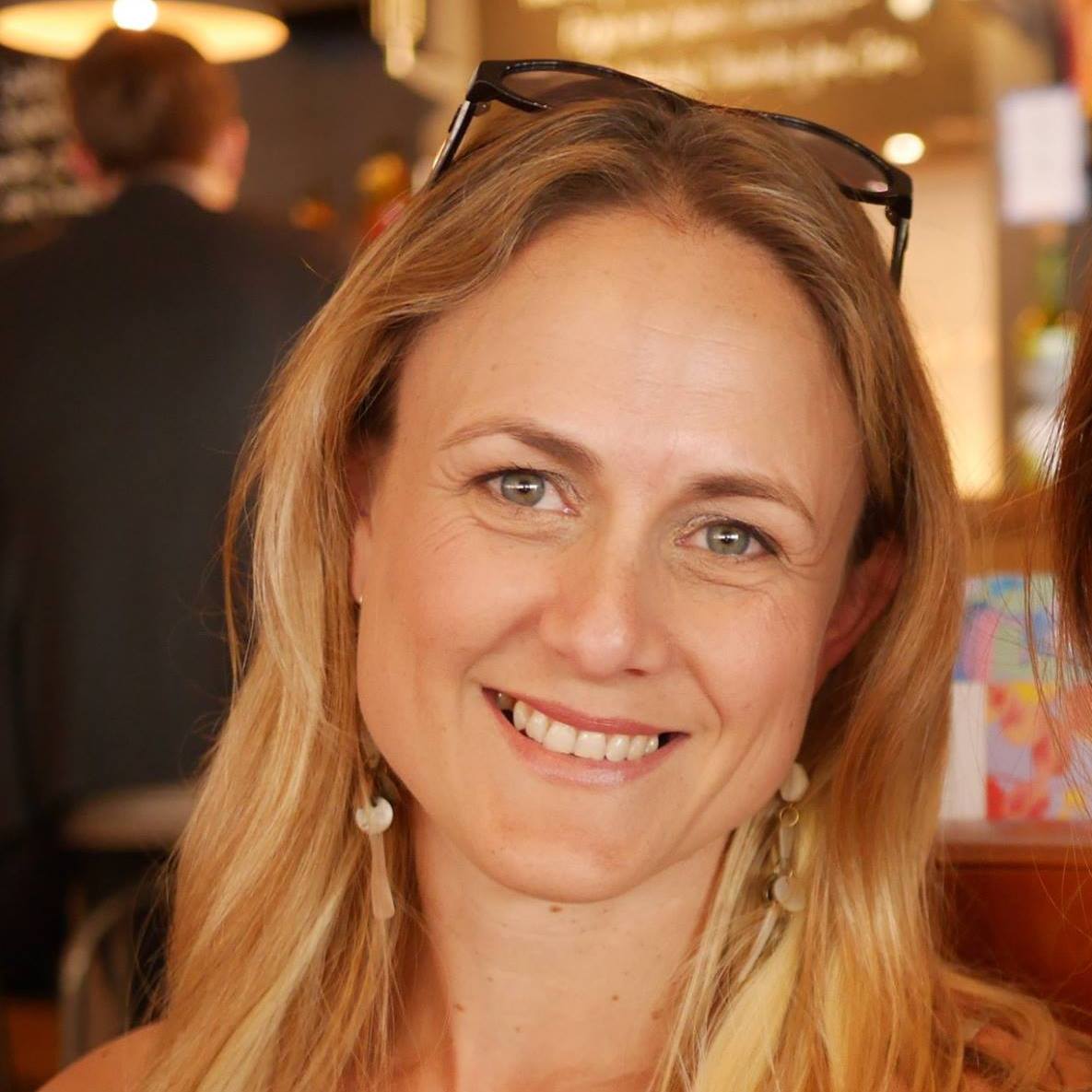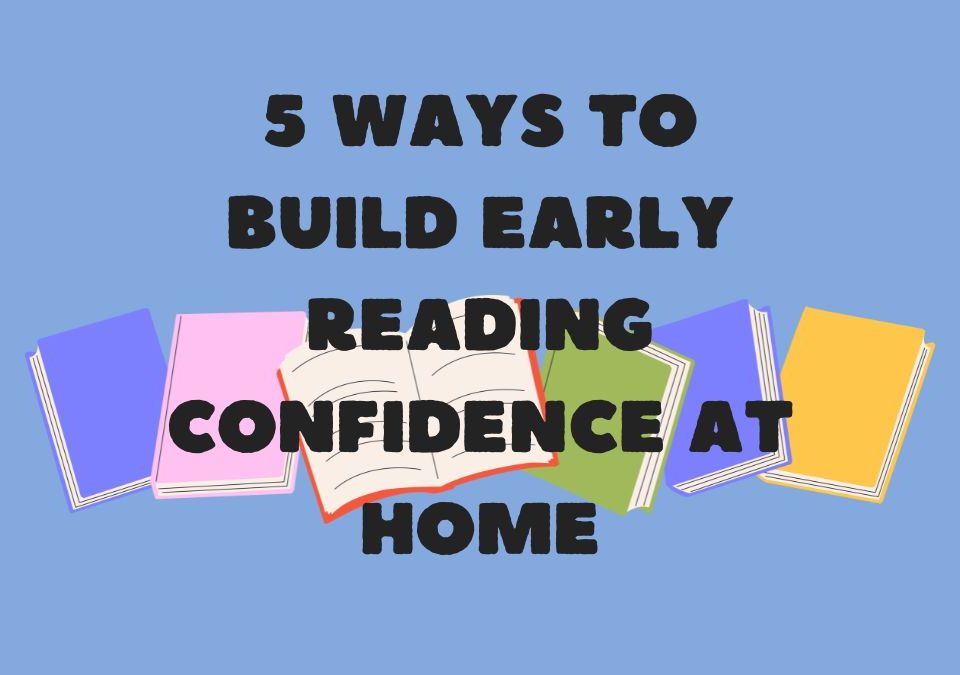
Recommended Books for under 4’s

Rainy Day poems

Simply talking, singing, playing sound and word games, reading, writing and drawing with your child are easy ways to build a firm literacy foundation. Your usual everyday activities, like going to the shop or library, as well as those special treats –like museum or zoo trips – all provide opportunities to develop literacy.
I have listed a variety of activities to help you develop literacy in the sections below. The activities in this article are aimed at preschool age children but are still suitable for older children – all you need to do is make them a little more challenging.
Because of busy lifestyles, many parents feel they haven’t got time to dedicate to literacy development activities. I would like to say though that you don’t need lots of time. Small five minutes blocks a few times a day is often more than enough. The key is to be creative and to use all the different opportunities you come across to help your child learn. These opportunities can take the form of a trip to the shop to a story before bed.
Table of Contents
Talk and sing
Talking and singing with children helps children to learn about sounds and how sounds come together to form words and therefore, language. By spending some time teaching your child language games and songs, you will be creating opportunities for him to develop listening and speaking skills.
- Use rhyme whenever you can. Children are naturally interested in rhymes. And they love repeating them. Use phrases like ‘snug as a bug in a rug’ or ‘1,2,3 Look at me!’ Make up nonsense rhymes about activities you are doing . Older children can make up their own rhymes, and learn poems and songs. You will be surprised at how quickly they will recite them back to you. These help them understand the meaning of words as well as how they are created.
- Try singing nursery rhymes with your child when you’re at home, in the car or out and about. Children love to sing, and nursery rhymes teach your child language, rhyme, repetition and rhythm. Try rhymes like ‘Baa Baa Black Sheep’, ‘Miss Polly had a Dolly’ or the Alphabet Song. If you are not a confident singer or simply don’t know that many songs, make use of CD’s to help…Attending toddler music groups and classes is also a good option.
- Repeat sounds your child makes, or make up sounds and see whether your child can copy them. We like making animal sounds or transport sounds, each one taking turns to think of the next one.
- A favourite of my daughters’ is to Play ‘I Spy’ with using colours. For example, ‘I spy with my little eye, something that is green. What is something green I might be looking at?’ We play this whenever we are walking or in the pram.
- Use descriptive language. Adjectives are good and toddlers love trying to use such “grown up” words. Talk about the food you’re preparing at home, how you are preparing it, how it tastes and what it looks like.
- Make your toddler aware of their environment-not just visually. Think about all the senses and talk. Chat about objects outside the house or when on an outing – the rustling of leaves, the sounds of the birds or traffic noises. Ask your child if she can make the sounds for wind, rain, water, airplanes, trains and cars. Discuss the smells, colours, shapes and textures.
Read and make books
Daily reading with your child helps develop his vocabulary, ability to listen and comprehend, and ability to understand the purpose of print. You will also be helping to set up a lifelong positive attitude towards reading.
- Younger children love predictable, patterned and alphabet books. Look at these books together and interact with your child while you read. Use your finger to guide your child’s eyes from left to right across the page as you read, and point out certain words or phrases. Ask questions about the pictures, and ask your child to point to different things.
- Children love reading the same book over and over again. You can make the most of this by asking your child to direct book reading – for example, ‘Where do we start from?’ Every so often, stop reading and ask your child what she thinks will happen next.
- Link books with real-life experiences. If you’ve read a book about playing in a park, you might like to take your child to the local park and point out the swings from the book.
- Visit the library with your child and encourage him to choose books he’d like to take home. While there, you might like to participate in story time.
- When out and about with your child, take a book along as well as a toy. This will help create a sense of fun with books, rather than just with toys.
- Read books with rhymes to help your child develop awareness of sounds and words. Dr Seuss and Pamela Allen books are a hit with many children. Try ‘The Cat in the Hat’ or ‘Doodledum Dancing’.
- Teach your child the separate sounds in his name. For example, ‘Sam’ has three sounds – s-a-m. Clap the syllables and show him the letters.
- Make touch books for babies and toddlers with objects they like to look at and touch – soft fabrics, wool, foil, paper that rustles. Then look through the book together and talk about how each page looks and feels.
Don’t worry if your young child becomes distracted when you’re reading, or if you don’t get through the whole book. Experiment with different books to see what he likes.
Draw and write
From an early age, children love to try to ‘write’ like their older siblings or parents. Play-writing (scribbles) and drawing helps your child develop the fine motor skills needed for writing with pencils and pens later. It also helps him begin to recognise and remember letter shapes.
- Encourage your child to draw and write using pens, pencils, crayons and markers. Keep a box of different drawing implements available at all times, in an easily accessible place. He will probably be excited to add a scribble or drawing on birthday cards or letters in a big swirl of colour.
- Encourage your child to attempt some letters or write her name on all pieces of artwork she creates for herself and the family. Model this by keeping a copy of the alphabet handy for him to copy from.
- Help him use play dough (playdough recipe) to make the letters of the alphabet or numbers.
- Give your child opportunities to use letters of the alphabet in different forms – on blocks, magnetic letters that stick on the fridge and puzzle pieces.
- Cut out, print or draw pictures of basic household items – chair, table, TV, wall, door and so on. Then write the items’ names on separate pieces of paper. Ask your child to match the name of the household item to the picture. You can leave these labels up and use them as everyday reminders.
Remember that literacy is not a subject to be taught. It is all around you-you just need to take the opportunity to draw your child’s attention to it.

I am a preschool and primary school teacher and mum to 3 children. I have been involved in education since 1997 and have trained in a variety of educational specialist areas. It is with this expertise that I write articles to help parents and educators provide quality learning experiences for the children in their care.




